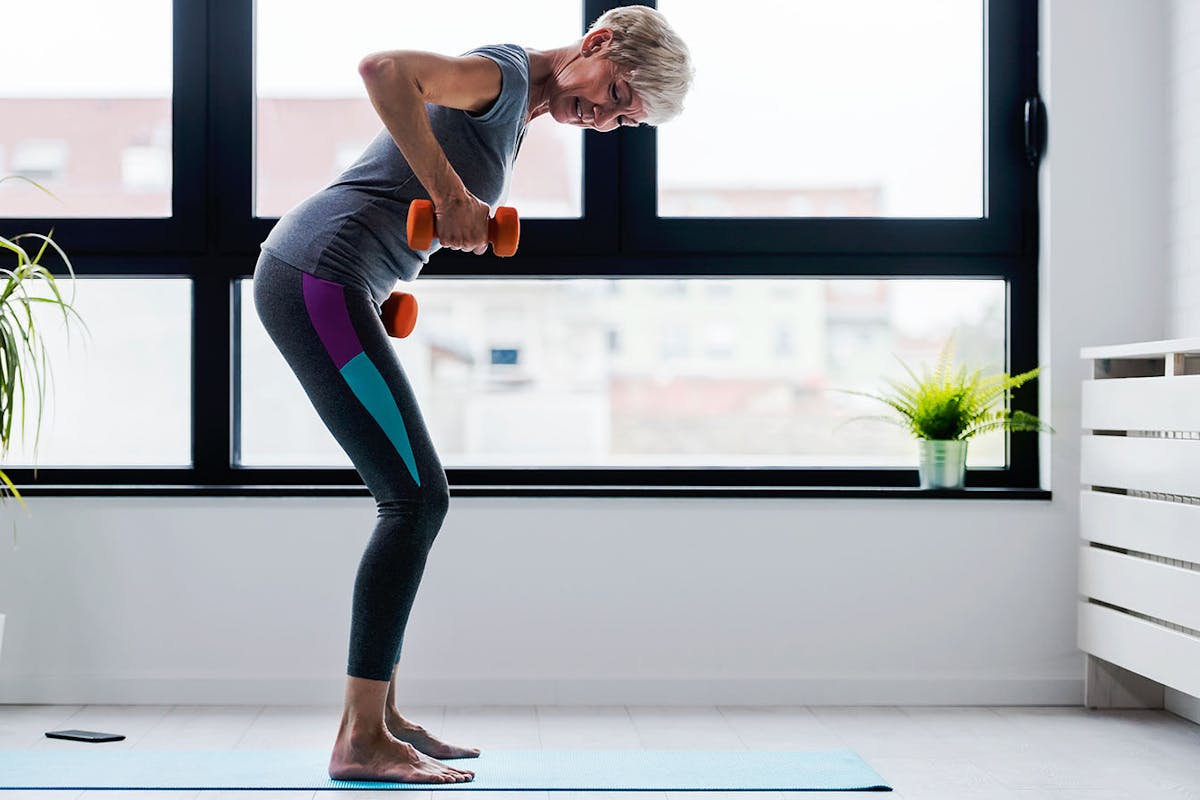4 Ways to Prevent Age-Related Muscle Loss

Many people have an image of seniors as being fragile and weak. There’s no doubt that growing older can put you at increased risk of frailty. Age-related muscle loss, known as sarcopenia, accelerates in your 60s and 70s. But it’s important to know that lifestyle can impact how strong you remain as you age.
Aging and Muscle Loss
Muscle loss begins long before you reach retirement age. People who fall into a sedentary lifestyle can see their muscle loss decrease by as much as 3% to 5% each decade after the age of 30. That’s surprising to many!
Why is preventing muscle loss so important, especially for older adults?
While staying strong helps you remain independent, there’s more to it than being able to carry your own grocery bags and romp in the yard with the grandkids. Muscle mass is also vital for maintaining core strength, which is critical for preventing falls.
Then there is the link between muscle mass and metabolic syndrome, which is an indicator for heart disease. Research shows that an increase in skeletal muscle mass over time may prevent the development of metabolic syndrome.
If you are a senior or the adult child of an aging loved one, we have a few suggestions for building and maintaining stronger muscles.
4 Ways Seniors Can Build Muscle Mass
- Activity: Sitting too much contributes to muscle loss. That’s true at any age, but more so with seniors. Researchers say it can be just as dangerous for an older adult as smoking and leads to more than muscle atrophy. Being sedentary can also result in obesity, diabetes, depression, and heart disease. By moving frequently throughout the day, you are protecting your muscles and your overall well-being.
- Weight training: It’s essential to incorporate activities that build and maintain muscles, whether it’s utilizing light weights or resistance bands, into your regular workouts. Work with a trainer at your fitness club to learn a few senior-friendly weight training exercises. If your fitness club is closed because of the COVID-19 pandemic or you prefer to work out at home, a good resource to read and bookmark is Everything You Need to Know About Strength Training from the senior fitness experts at Silver Sneakers.
- Walking: While it might not seem like it, walking is great exercise! It helps with endurance, balance, muscle strength, and mental health. Since it doesn’t require any special equipment beyond a good pair of walking shoes, it’s a budget-friendly form of exercise, too. Find a fitness partner to help you stay motivated and hold you accountable. To keep it interesting, the two of you might want to find a couple of places to walk, such as parks and school tracks, and alternate between them. Local malls and large home improvement stores can be great spots to walk during inclement weather.
- Nutrition: Diet plays a key role, too, in building and maintaining muscle mass. Work lean protein, such as fish, eggs, poultry, nuts, and beans, into your weekly menus. Hydration is also important for healthy muscles. Follow the often-heard advice to drink eight glasses of water each day, more if you are outdoors on humid days or engaged in activities that cause you to sweat profusely. If you don’t care for water, supplement what you do drink with foods that have a high water content, such as soups, cucumbers, celery, leafy greens, berries, and melons.
As you should before beginning any new type of exercise program, check in with your primary care physician before getting started.
Invest in a Mobile Medical Alert System
One device that can give you and your loved one’s peace of mind is a mobile medical alert system. If you do experience a fall or other emergency, you can call for help with the push of a button. Call 1-844-203-5617 today to learn more!